Australia's Koala Regions
The Australian koalas thrive at the Eastern and Southern regions of the Australian continent. Wild koalas live at the four major states within Eastern and Southern regions which include the Queensland, the Victoria, the New South Wales and the South Australia. Koalas are usually populated around the coastal regions within these states. Furthermore; these 4 states to a greater extent offer perfect habitat for the koalas to live. According to the Australian Koala Foundation, there are as many as 85,000 koalas within these regions.
The Australian koala lives at the 4 major regions of Australia which include the Queensland, the New South Wales, the Victoria and the South Australia.
Other Australian regions such as the Western Australian, the Northern territory and the Tasmania has no signs of koala population. The environment within these Australian regions is not suitable for the koalas. However; koalas are so popular across Australia that zoos and animal sanctuaries within all the major regions have koalas for its visitors. Therefore, the captive koalas are quite widespread throughout Australian regions.
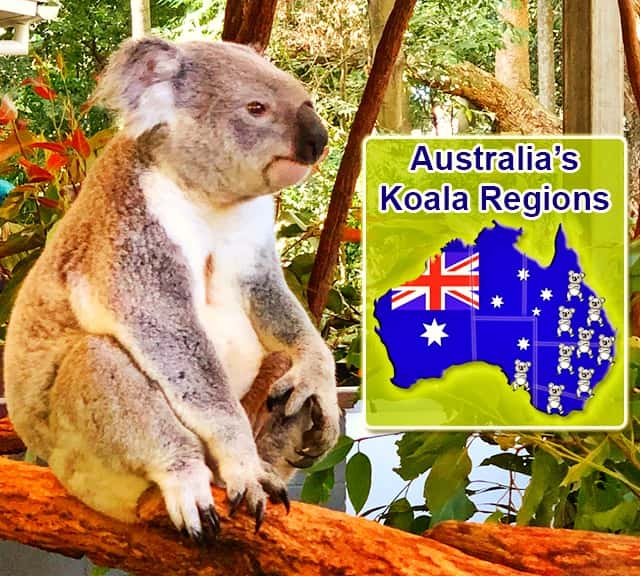
The state of Victoria in Australia has the maximum numbers of koala population. It is estimated that around 28,000 koalas live in this region. The koalas from the Victorian state enjoy the best and the dense habitat as compared to the other states. This is the key reason that the koalas from this region are the biggest ones as compared to the other 3 states where the koalas live.
The Australia's Victorian state has the maximum numbers of koalas i.e., 28,000. The Corangamite, Indi, Murray and the Wannon are one of the famous areas from Victoria with maximum numbers of koalas.
Victoria's densely populated areas of koalas include the Corangamite, Indi, Murray and the Wannon. The Victorian koala weighs around 10 to 14 kilograms in weight. Moreover; the color of the fur of the Victorian koala is different than the other koalas i.e., the Victorian koala has a chocolate brown colored fur while the koalas from the other regions have light-grey colored fur.
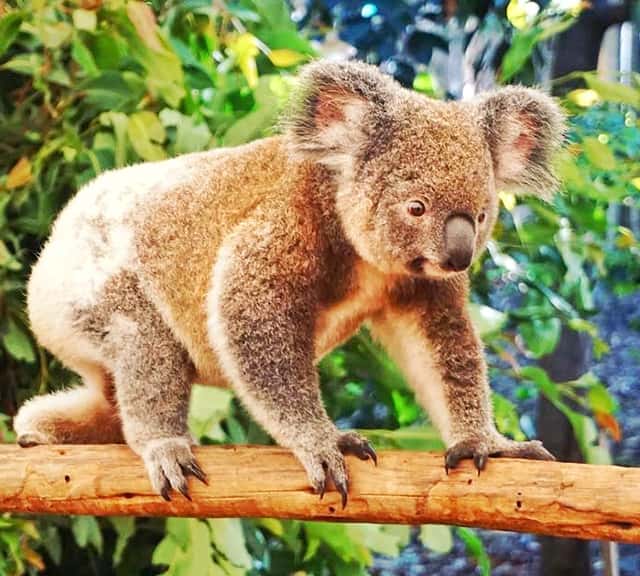
The Australia's Queensland state is on the second spot, when it comes to the total numbers of koalas. Queensland once had the maximum numbers of koalas but today just 24,000 koalas are living in the region. Densely populated areas of koalas within the State of the Queensland include the Maranoa, Flynn, Capricornia and the Herbert etc. Researchers have estimated that Queensland has almost lost more than 80% of its koala population from the last decade or so.
Queensland is the second biggest area of Australia which has maximum numbers of koalas. Today about 24,000 koalas live within the Queensland region.
Deforestation, Habitat loss, rapid urbanization, agriculture, Chlamydia and droughts are to blame for the decline of the koala population within the Queensland. The koalas from the Queensland region are a bit different than their Victorian cousins. They are light grey in color and their sizes are also smaller than the Victorian koalas. Queensland koalas merely weigh around 7kg to 9 kg in weight.
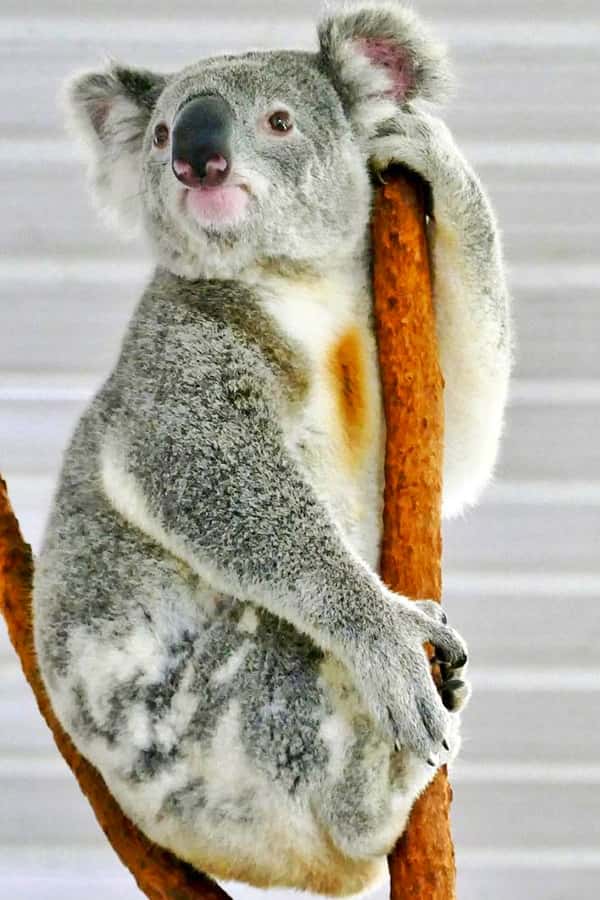
South Australia is the third most dominant koala populated area of Australia with almost 19,000 koalas in this region. Mayo is the most densely populated area in this region while other densely populated areas include the Boothby and the Sturt. The Mayo area of the South Australian, is the largest single region within any Australian state to have maximum numbers of koalas i.e., more than 12,000 in numbers.
The South Australian state has as many as 19,000 koalas. Its most densely populated koala area is Mayo which has more than 12,000 koalas.
The koalas in the South Australian region also have the chocolate brown colored fur. The size of the South Australian koalas are also bigger than the Queensland koalas. They usually weigh around 10 to 14 kilograms in terms of their weights. The koalas in this region are often threatened by the bushfire which almost destroys their natural habitat i.e., the Eucalyptus leaves.
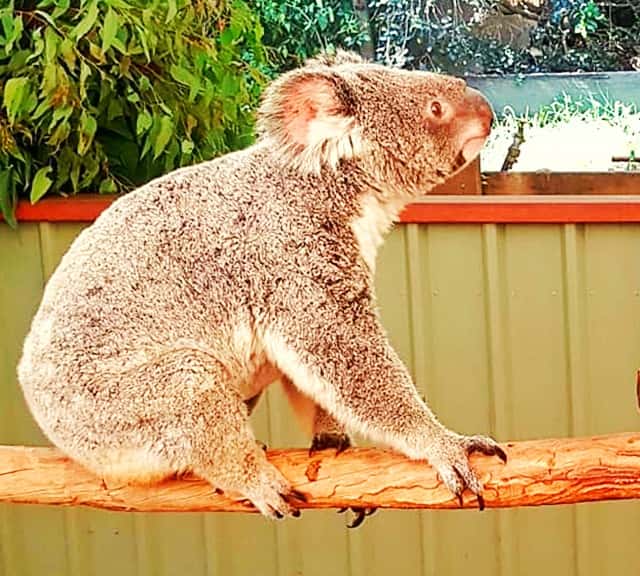
The fourth and last state to have significant numbers of koalas is the New South Wales. The state of New South Wales has more than 16,000 koalas in its various regions. Famous areas to have koalas within New South Wales include the Cowper, New England, Parkes and the Lyne. All of these areas have as in between 2000 to 3000 koalas.
The state of the New South Wales has as many as 16,000 koalas within the region. Koalas in this region are the most threatened and the endangered ones and with current trends it may become extinct by 2050.
Recently; the koalas in some areas of this state have become extinct as well while others are also threatened as well. The koalas from the New South Wales are the most threatened and endangered ones in Australia. According to the estimates, if the current trends continued the koala from the state of New South Wales will be extinct by 2050.
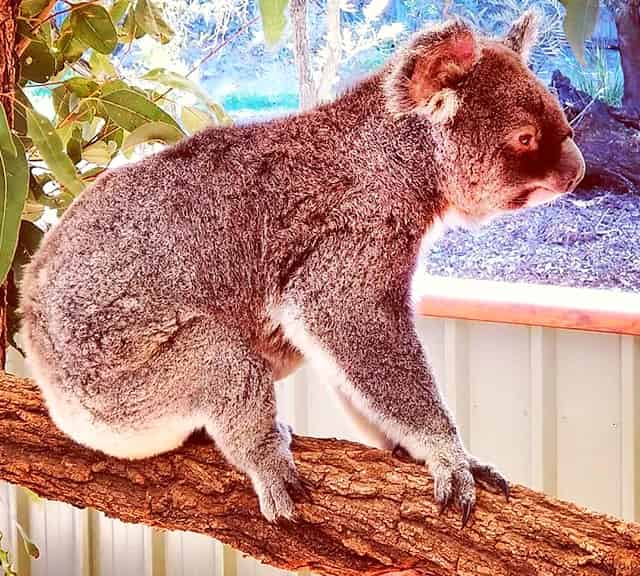
Since koalas natively belongs to the Australian continent, it is believed that not so long ago the koalas were widespread throughout the continent of Australia. Except for the Northern Territory and the Tasmania, the koala fossils have been found within the Western Australia , Southern Australia, Victoria and the New South Wales.
Koalas were once widespread throughout the continent of Australian. Western Australia which doesn't have a single wild koala today was a home to a great numbers of koala population too.
However; it is thought that the habitat loss with the passage of time contributed towards the demise of the koalas within Western Australia. Even recently a few centuries ago (1799), there were about 10 million koalas within Eastern, Central and Southern regions of Australia. However; the unprecedented hunting for the sake of their fur minimized the koala population from 10 million to just a few hundred thousand.
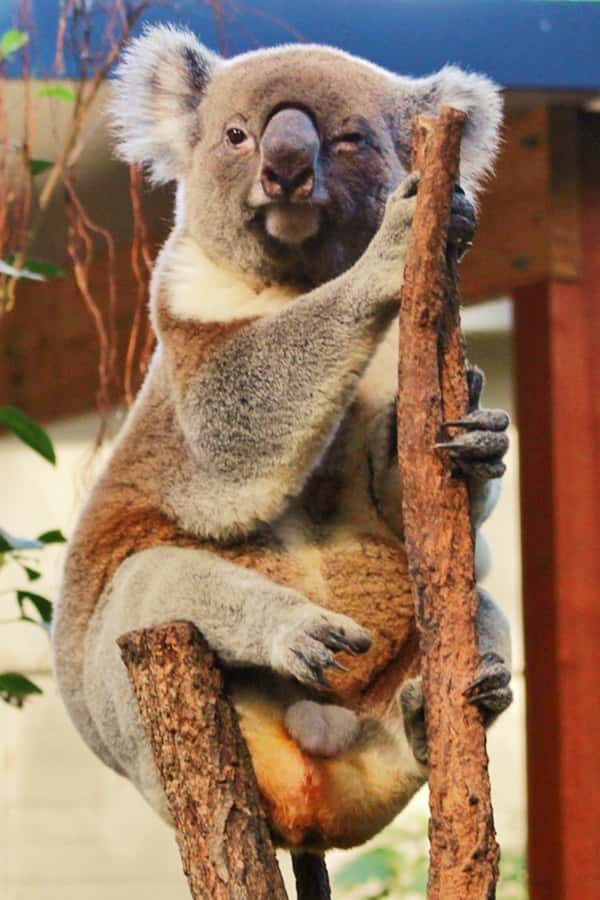
Liger Articles
Marsupials vs. Placental Mammals
Koalas are most popular animals in Australia
Koalas are more popular as compared to Kangaroos
Koalas and their Dominant Nose
Button Shaped Fascinating Eyes of the Koalas
Core Recognizing Features of Koalas
Koalas are the largest tree climbing Mammals in Australia - Koalas as Arboreal
Sizes of Koalas from Queensland, Australia
Sizes of Koalas from Australia's Victorian Origin
Difference between Queensland and Victorian Koalas
Average Weights of Male Koalas
Weighing Male vs Female Koalas
Male Koalas have Loudest of voice among all Australian Mammals
Origin of Koalas & their Evolution
Koalas Population Increased at the end of 20th century
Historical Evolution of the Koalas - A Physical Perspective
Koalas and their Aboriginal and Native Names
It Took 10 years for Aboriginal Australians to Spot and Recognize Koalas
Koalas Live Hardest and Toughest Lives Among all animals
Koalas Tooth Decay through its Abrasive Diet
Koalas Diet is Fully Poisonous and Toxic
Koalas' Food Eucalyptus has Lower Nutrition
Koalas have Lower Energy Levels
Koalas - When Occasionally Spotted on other Leaves for their Food
Why Koalas drink little or no Water?
Koalas & their Advanced Digestive Mechanisms
Why Koalas Sleep more than 20 Hours a Day?
Koalas Lack Energy and Strength
Koala's Tooth from Growth till Tooth Decay
Young Koalas are Better Chewers as Compared to Mature and Elderly Koalas
Why Most Koalas Die of Starvation?
Heat Exhaustion and Heat Strokes among Koalas
Do Koalas lack Intellectual Abilities?
Koalas and their Sense of Smell
Koalas Love Fresh Eucalyptus Leaves as their Food
Koalas' Eucalyptus Leaves' Preferences during summers and Winters
Koalas' Preference for Leaves Having Higher Nitrogen Levels
Koalas Prefer Big Eucalyptus Trees and Love to Stay at Trees' tops.
Koalas Prefer to Live in Areas that have Good Soil and Fertile Lands
Koalas' Per Day Food Consumption
Koalas Food Consumption Depends upon their Body Size
Lactating Female Koalas Consume More Food as Compared to the Normal Female Koalas
Koalas Consume More Food during Winters as Compared to Summers
Female Koalas are very Selective Regarding their Leaf Selection and Food Consumption.
A Baby Koala Joey Lives in her Mother's Pouch for 8 to 9 Months
Gestation Period within Female Koalas
Breeding Behaviors of the Female Koalas
The Size of the Baby Koala Joey at the time of its Birth
Weight of the Baby Koala Joey at the Time of its Birth
At Birth the Baby Koala Joey Travels from Cloaca into their Mother's Pouch
Newborn Koala Joeys have Well-Established Sense of Smell
Koala Joey keeps his Head Inside its Mother's Pouch for 6 Months
Complete Shape and Body Development of the Koala Joey
Pap - The first solid food of the Koala Joeys
When Does Tooth Emerge for Baby Koala Joey?
Aggressive Behavior of Mother Koalas towards their Joeys
Queensland Offers Less Nutritional Values for Koalas
How long does Koalas live? Age of the Koala
Female Koalas Live More than Male Koalas
What is the Average Age of the Male Koala?
Average Ages of the Female Koalas
For How Long a Female Koala can Give Birth to the Koala Joeys?
How many times female Koalas give birth?
Koalas and Australia's Bushfire
Koalas' fur quickly gets rid of rain water
Koalas Resting and Sleeping Postures and Positions during the Hot Summer Seasons
Winter Season and Sleeping Postures of Koalas
Koalas' Urination during Summer and Winter Seasons
Koalas and their Specialized Claws
How does a Koala regulate its Body Temperature?
Food Consumption and Feeding Timings of the Koalas
Koalas Always Prefer Eucalyptus Leaves from the Tree top
How does a Koala Grooms itself?
Koalas' Territories and ranges within Australia's Victorian Areas
Koalas' Territories and Ranges within Australia's Queensland Areas
Behavior of the Alpha Dominant Male Koala
Aggressiveness of Female Koalas
Scent Marking Behavior of the Male Koalas
Mating Strategy of the Male Koalas
Fights and Territorial Encounters of Male Koalas
Sounds and Vocalizations of Male Koalas
Sounds and Vocalization of the Female Koalas
Koalas and their Facial Expressions
Breeding Ages of the Male and Female Koalas
Factors Influencing the Success of Koalas' Fertility Rates
Behavior of the young and adolescent Koala Joey
When Does a Mother Koala Says Goodbye and Leaves the Young Koala Joey?
Playful Behavior of the Young Koala Joeys
Koalas - Mating Season and Mating Months
Koala Informationen, Bilder, Neuigkeit, und Erforschung
Коала - сумчатый млекопитающий